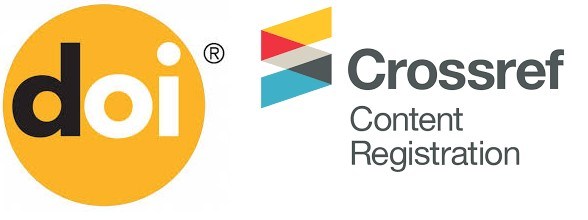Razonamiento estadístico en el contexto COVID-19: una propuesta basada en GeoGebra
DOI:
https://doi.org/10.46219/rechiem.v13i4.77Keywords:
Razonamiento estadístico, Análisis exploratorio de datos, Covid-19, GeogebraAbstract
En este trabajo presentamos una propuesta didáctica de análisis exploratorio de datos asociados a la evolución de la pandemia en las comunas de Chile. Las actividades son formuladas utilizando el software Geogebra, en su versión clásica 6.0. Se seleccionaron 15 comunas de 3 regiones para incluir un análisis univariado de los casos activos comunales, un análisis de regresión para identificar comunas cuyas evoluciones sean similares y análisis multivariado para comparar comunas en grupos. Finalmente se ejemplifica un método de agrupamiento para clasificar comunas en función de sus casos activos por cada 100 mil habitantes.
Downloads
References
Arnold, P. (2008). Developing new statistical content knowledge with secondary school mathematics teachers. En C. Batanero, G. Burrill, C. Reading y A. Rossman (Eds.), Joint ICMI/IASE Study: Teaching Statistics in School Mathematics. Challenges for Teaching and Teacher Education. Proceedings of the ICMI Study 18 and 2008 IASE Round Table Conference (pp. 1-6). International Commission on Mathematical Instruction and International Association for Statistical Education.
Ben-Zvi, D., y Garfield, J. (2004). Statistical literacy, reasoning, and thinking: Goals, definitions, and challenges. En The challenge of developing statistical literacy, reasoning and thinking (pp. 3-15). Springer. https://doi.org/10.1007/1-4020-2278-6
Biblioteca del Congreso Nacional. (2021, 20 de mayo). Reportes comunales. https://www.bcn.cl/siit/reportescomunales/index.html
Blondel, V., Guillaume, J., Lambiotte, R., y Lefebvre, E. (2008). Fast unfolding of communities in large networks. Journal of Statistical Mechanics: Theory and Experiment, (10), P10008. https://doi.org/10.1088/1742-5468/2008/10/P10008
Chance, B. (2002). Components of statistical thinking and implications for instruction and assessment. Journal of Statistics Education, 10(3), 1-14. https://doi.org/10.1080/10691898.2002.11910677
Chance, B., Ben-Zvi, D., Garfield, J., y Medina, E. (2007). The role of technology in improving student learning of statistics. Technology Innovations in Statistics Education Journal, 1(1), 1-27. https://doi.org/10.5070/T511000026
Del Pino, J. (2013). El uso de GeoGebra como herramienta para el aprendizaje de las medidas de dispersión. Probabilidad Condicionada: Revista de didáctica de la estadística, 2, 243-250.
Dvir, M., y Ben-Zvi, D. (2021). Informal statistical models and modeling. Mathematical Thinking and Learning, 1-21. https://doi.org/10.1080/10986065.2021.1925842
Estrella, S. (2017). Enseñar estadística para alfabetizar estadísticamente y desarrollar el razonamiento estadístico. En A. Salcedo (Ed.), Alternativas Pedagógicas para la Educación Matemática del Siglo XXI (pp. 173-194). Centro de Investigaciones Educativas, Escuela de Educación. Universidad Central de Venezuela.
Estrella, S., y Estrella, P. (2020). Representaciones de datos en estadística: de listas a tablas. RECHIEM, Revista Chilena de Educación Matemática, 12(1), 21-34. https://doi.org/10.46219/rechiem.v12i1.20
García, G., y Cuadros, P. (2013). Estrategias para mejorar la enseñanza de la Estadística con GeoGebra. En Sociedad de Educación Matemática Uruguaya (Ed.), VII Congreso Iberoamericano de Educación Matemática (pp. 6335-6342). Autor.
Garfield, J. (2002). The challenge of developing statistical reasoning. Journal of Statistics Education, 10(3), 1-12. https://doi.org/10.1080/10691898.2002.11910676
Gibbons, J. D., y Chakraborti, S. (2003). Nonparametric Statistical Inference. Marcel Dekker.
Guncaga, J., Zawadowski, W., y Prodromou, T. (2019). Visualisation of Selected Mathematics Concepts with Computers – the Case of Torricelli’s Method and Statistics. European Journal of Contemporary Education, 8(1), 69-91. https://doi.org/10.13187/ejced.2019.1.69
Isoda, M., y Olfos, R. (2020). Teaching multiplication with Lesson Study: Japanese and Ibero-American Theories for Mathematics Education. Springer. https://doi.org/10.1007/978-3-030-28561-6
Makar, K., Bakker, A., y Ben-Zvi, D. (2011). The reasoning behind informal statistical inference. Mathematical Thinking and Learning, 13, 152-173. https://doi.org/10.1080/10986065.2011.538301
Makar, K., y Rubin, A. (2009). A framework for thinking about informal statistical inference. Statistics Education Research Journal, 8(1), 82-105.
Makar, K., y Rubin, A. (2018). Learning about statistical inference. En D. Ben-Zvi, K. Makar y J. Garfield (Eds.), International handbook of research in statistics education (pp. 261-294). Springer. https://doi.org/10.1007/978-3-319-66195-7_8
Mellado, A., y Marín, L. A. (2010). Distribuciones estadísticas: Un ejemplo de uso de GeoGebra en enseñanza universitaria. Épsilon, 74, 33-42.
Mena, G. E., Martínez, P. P., Mahmud, A. S., Marquet, P. A., Buckee, C. O., y Santillana, M. (2021). Socioeconomic status determines covid-19 incidence and related mortality in Santiago, Chile. Science, 372(6545). https://doi.org/10.1126/science.abg5298
Ministerio de Ciencia. (2021, 20 de mayo). Datos-COVID19 [GitHub dataset]. https://github.com/MinCiencia/Datos-COVID19
Ministerio de Educación de Chile. (2019). Bases Curriculares 3° y 4° año medio. Autor. https://www.curriculumnacional.cl/614/articles-89597_recurso_10.pdf
Olfos, R., Estrella, S., y Morales, S. (2015). Clase pública de un estudio de clases de estadística: Una instancia de cambio de creencias en los profesores. Revista Electrónica Educare, 19(3), 1-17. https://doi.org/10.15359/ree.19-3.21
Pfannkuch, M. (2006). Informal inferential reasoning. En A. Rossman y B. Chance (Eds.), Proceedings of the 7th International Conference on Teaching Statistics (pp. 1-6). International Association for Statistics Education.
Prodromou, T. (2014). GeoGebra in Teaching and Learning Introductory Statistics. Electronic Journal of Mathematics and Technology, 8(5), 363-376.
Propuestas Educación Mesa Social Covid-19. (2020). Didácticas para la proximidad: aprendiendo en tiempos de crisis. Pontificia Universidad Católica de Chile y Universidad de Chile. https://www.pucv.cl/uuaa/site/docs/20200723/20200723181922/dida__cticas_para_la_proximidad___aprendiendo_en_tiempos_de_crisis.pdf
Rossman, A. (2008). Reasoning about informal statistical inference: One statistician’s view. Statistics Education Research Journal, 7(2), 5-19.
Triola, M. F. (2009). Estadística (10.a Ed.). Pearson Education.
Tukey, J. (1977). Exploratory data analysis. Reading, MA: Addison-Wesley.
Universidad del Bío-Bío. (2021, 20 de mayo). Plataforma de comparación comunal datos covid-19. http://covid19.ubiobio.cl/index.html
Wild, C. J., Pfannkuch, M., Regan, M., y Horton, N. J. (2011). Towards more accessible conceptions of statistical inference. Journal of the Royal Statistical Society: Series A (Statistics in Society), 174, 247-295. https://doi.org/10.1111/j.1467-985X.2010.00678.x
Zenteno Ruiz, F. A., Rivera Espinoza, T. A., y Pariona Cervantes, D. J. (2020). Tratamiento de las medidas de dispersión por medio del software GeoGebra. Universidad y Sociedad, 12(1), 244-250.
Zieffler, A., Garfield, J., Delmas, R., y Reading, C. (2008). A framework to support research on informal inferential reasoning. Statistics Education Research Journal, 7(2), 40-58.











